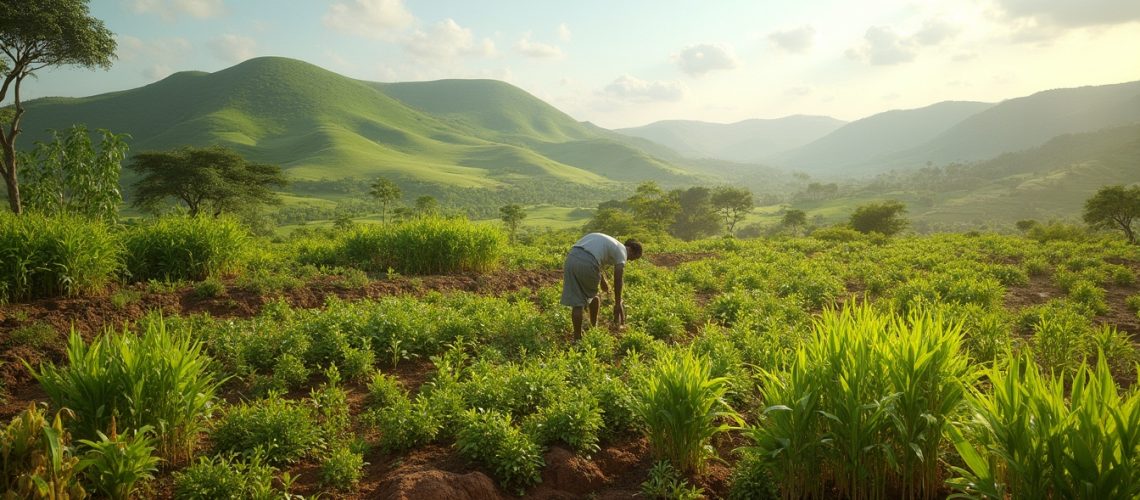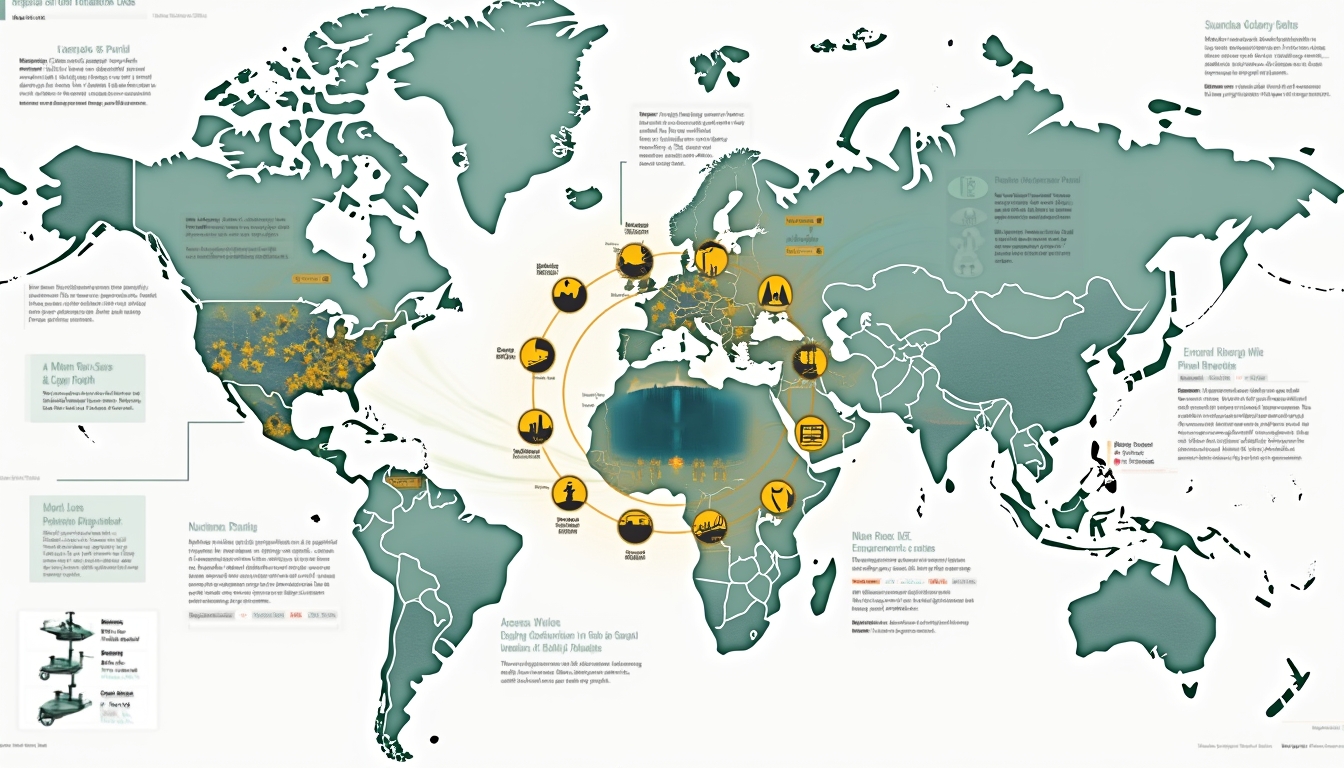Sovereign Metals completes test pit rehabilitation at the Kasiya project in Malawi, marking a transformative moment in responsible mining. This milestone demonstrates how proper land rehabilitation can open new possibilities for local communities and agriculture. The project underscores innovative techniques that merge mining with sustainable practices and is reminiscent of advances seen in cv5 pegmatite role.
At the heart of this approach is a commitment to sweeping environmental change, ensuring that natural landscapes are restored after resource extraction. This strategy provides the framework for improved soil health and increased agricultural productivity. Many experts consider this effort a benchmark in the industry.
Sovereign Metals completes test pit rehabilitation while addressing community needs and environmental stewardship. The rehabilitation process creates a lasting legacy that benefits local farmers and sets new standards for mining operations. The project’s success can be seen in its immediate impact on local economies and the broader sustainability goals.
What is the Significance of the Project?
The test pit rehabilitation has revolutionised traditional mining practices. An impressive 170,000 cubic metres of land have been backfilled, allowing farmers prompt access to their land. Authorities have hailed this as a model for industry best practices.
Community welfare is central to this project. Local farmers benefit not only from restored land but also from opportunities to diversify their agricultural practices. This integrated approach aligns responsible mining with community-driven growth. Check out a recent proactive investors update for further insights.
Many see this as a modern showcase of responsible resource extraction. The initiative is well appreciated by government officials and local leaders alike. It even draws parallels with advancements in mining energy transition.
How Does the Rehabilitation Process Work?
The rehabilitation strategy began in December with the introduction of a conservation farming model. This model incorporated multiple crop varieties to test soil recovery and assess agricultural potential. Engineers and agronomists collaborated on a plan that required careful evaluation of various factors.
The selected crops were chosen for their well-known benefits. They include:
- Maize
- Giant bamboo
- Sun hemp
- Groundnuts
- Mung beans
Each crop was chosen to help assess soil health, nitrogen fixation, and potential economic returns. The diversity in cropping provides a complete picture of the land’s recovery potential. The use of a multi-crop approach is similar to techniques discussed in mineral exploration approaches.
This approach has provided clear insights into the interplay between mining and agriculture. Strategic implementation has ensured a measurable restoration of the land. In turn, it offers a replicable model for similar mining contexts.
What Are the Key Outcomes of Rehabilitation?
The outcomes of the rehabilitation have been transformative both for local communities and for the mining sector. The successful backfilling has resulted in immediate land access, vital for the planting season. The yield increases achieved during the pilot phase topped 300%, a statistic that speaks volumes about the project’s success.
Community participation was significantly boosted by the project. The Conservation Farming programme expanded from 90 to 350 farmers in a short period. Local stakeholders have embraced the change, witnessing enhanced productivity and improved soil conditions. The economic benefits are becoming evident across the region.
This project is more than just a technical success; it drives sustainable practices that members of the community can rely on. The restored land now holds promise for future agricultural self-sufficiency.
What Did Company Leadership Say?
CEO Frank Eagar publicly praised the rehabilitation results achieved at Kasiya. He described the outcomes as "excellent" and emphasised the significance of building a positive relationship with the community.
The leadership team affirmed that the data collected during the process will be crucial for future mine closure plans. By integrating environmental restorative techniques with core business strategies, the company demonstrates strong social responsibility. It is an approach that many consider vital in today’s mining environment.
Frank’s comments resonate widely in industry discussions around sustainability. Many industry experts believe this development sets a high bar for future projects and offers a framework for successful rehabilitation. This sentiment is echoed in reports such as a mining weekly report.
Why is This Rehabilitation Approach Important?
Mining operations are frequently criticised for their adverse environmental impact. The Kasiya project highlights a growing trend where environmental care and community benefit are prioritised. The project serves as a demonstration that responsible mining can coexist with productive agriculture.
Key aspects include:
- Immediate economic benefits for local farmers.
- Enhanced environmental stewardship that improves soil fertility.
- Sustainable land use planning that respects ecological balance.
- Community-centric development strategies that foster trust.
This balanced approach not only improves agricultural outcomes but also establishes mining as a catalyst for societal progress. It reflects an industry-wide move towards more sustainable practices, underlined by other efforts such as green hydrogen boost.
What Are the Future Implications?
The success of the Kasiya project offers a potential template for similar endeavours globally. Future projects can adopt this model to improve both environmental and economic outcomes, setting new standards for responsible mining practices. The improvements may also garner a stronger social licence for operations in sensitive areas.
Several key implications emerge:
- Scalability to other mining regions is now a real possibility.
- Direct economic benefits create long-term community stability.
- Enhanced industry standards foster better environmental policies.
These points provide a clear roadmap for future initiatives. The project highlights how virtual mining safety can bring technological and sustainable advantages to the mining industry. The model is being closely studied by experts worldwide.
Sovereign Metals completes test pit rehabilitation as a beacon of what sustainable mining can achieve. The project not only benefits local agriculture but also sets into motion strategies that can reform conventional mining practices globally.
Frequently Asked Questions
How long does land rehabilitation take?
Land rehabilitation typically lasts 1-3 growing seasons. This can vary based on soil type and the crops planted. The gradual process is monitored carefully to ensure full recovery.
What crops work best in rehabilitated mining areas?
Crops that fix nitrogen and endure harsh conditions are preferred. Examples include sun hemp, legumes, and giant bamboo. These varieties help boost soil health and economic returns.
How do conservation farming techniques improve yields?
Conservation farming relies on improved soil management practices. Techniques such as crop rotation, minimal soil disturbance, and careful water management are key. These methods enhance soil fertility and ultimately lead to better crop yields.
Are these rehabilitation techniques replicable globally?
Yes, the methods applied at Kasiya offer a replicable framework. This ensures environmental balance and economic viability in other mining areas. The success of these approaches is encouraging for sustainable resource extraction worldwide.
Sovereign Metals completes test pit rehabilitation with a visionary outlook that integrates environmental and community priorities. The approach, combining rigorous technical execution with sustainable practices, sets a new industry paradigm. New advances and successes continue to populate the mining landscape, emphasising responsible innovation and effective rehabilitation.
The Kasiya project stands as a definitive example of how a modern mining operation can align economic gains with ecological responsibility. Stakeholders and experts recognise its potential to redefine industry standards and shape future mining practices in significant ways.
Ready to Uncover the Next Big Mining Opportunity?
Discover game-changing mineral investment insights with Discovery Alert's AI-powered real-time notifications, designed to simplify complex ASX announcements and help both new and experienced investors identify significant discoveries and potential investment opportunities. Start your 30-day free trial today and transform the way you approach mineral exploration investing.







